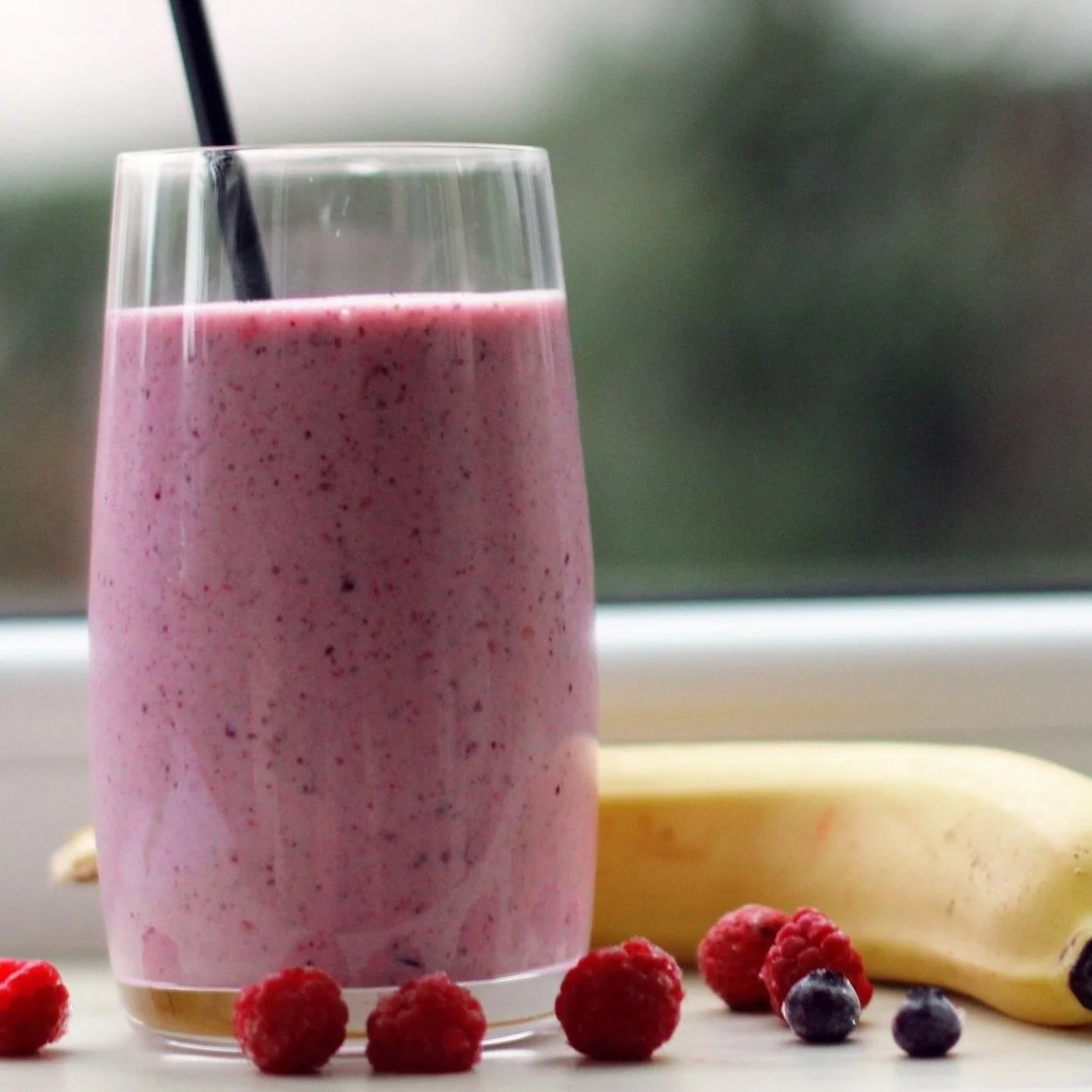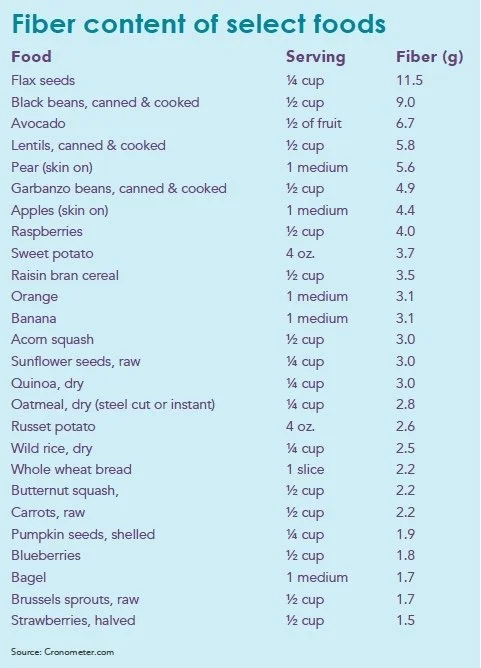Fiber Up Your World!
Do I need a fiber supplement?
I hear this a lot! Well, we certainly want things moving down there. 💩
And while a fiber supplement may help, there’s usually a better way!
Increasing fiber through foods is my favorite route for maintaining regularity.
So, what exactly is fiber?
Fiber is found in plants. It gives them structure. Fiber is a carb, but unlike other carbs (sugars and starches), fiber doesn’t break down in digestion.
So maybe you’re wondering, why should I care?
I promise, you care, you care!
This delicious smoothie packs 18 g of fiber! (Recipe below.)
We need fiber for many reasons. Let’s start with…
• Good pooping. Fiber adds bulk to stools to help keep things moving. Oh, yeah…
• Managing cholesterol. Fiber can help reduce cholesterol absorption in the body, effectively reducing LDL (low density lipoprotein) particles in the bloodstream in some people
• Blood sugar balance. Fiber helps slow digestion, helping prevent blood sugar spikes. It’s filling, too, so that may help with weight loss
• Healthy gut. When healthy gut bacteria gobble up special types of fiber (see below), they create short chain fatty acids (SCFAs), which help keep our colons healthy among other benefits
What about bloating, you ask?
If you bloat with high-fiber foods like fruit and veggies (often garlic, onions, broccoli and cauliflower) your gut microbiome, the community of microbes in your GI tract, may well be out of balance. I can help!
How much fiber do we need?
Americans average 15 grams of fiber each day, well below the recommended 25-38 grams, for women and men, respectively. A more accurate target is to consume 14 grams of fiber for every 1,000 calories of food you eat.
I can help you create high-fiber meals in a snap!
What are the most fiber-rich foods?
Thanks to good marketing, the word “fiber” makes us think of grainy breads and bran cereals from the 80s. But these are often highly processed, lacking in nutrients and high in carbs, which can spike blood sugar.
Raspberries, avocado and flax seeds are a few of my high-fiber favorites (see graphic). Most nuts, seeds and beans are packed with fiber, as are artichoke hearts, broccoli, apples and pears. Fiber is highest in a plant’s peel or skin.
When it comes to “fermentable fiber,” the kind our gut bacteria love most, try jicama, Jerusalem artichoke, chicory root, garlic, onion, leeks, chives and scallions. These gut buddies also love resistant starches, compounds created when we cook and cool (for 24 hours) yams, sweet potatoes and other starchy plants.
Need help dialing up your fiber? I can help you.
As for a fiber supplement …
Just 2 tablespoons of flaxseeds offers more fiber than some fiber supplements. I grind whole seeds in a coffee grinder (then store in the fridge); add to smoothies, salads or other foods.
Contact me to learn ways you can boost fiber with whole food. The smoothie below is a tasty high-fiber start!
Raspberry banana smoothie
Ingredients
• 1/2 – 3/4 C filtered water, coconut water or green tea (cooled)
• 2/3 C raspberries*
• 2/3 C broccoli florets and stems
• 1/2 avocado
• 1/3 banana
• 2 T flaxseeds
• 1 T raw, shelled pumpkin seeds
• 1/2 a lemon (seeds removed)
• (optional) 1 serving protein powder (i.e. grass-fed whey or collagen; pea or hemp)
*Frozen berries are a great option, picked at peak of ripeness!
(Watching your sugar? Skip the banana!)
Instructions
Combine ingredients in a blender and enjoy. If you prefer a colder smoothie, start with frozen fruit or add ½ cup ice before blending.
Sources:
Dahl WJ, Stewart ML. Position of the Academy of Nutrition and Dietetics: health implications of dietary fiber. Journal of the Academy of Nutrition and Dietetics. 2015; 115: 1861-1870.
Ho HVT, Sievenpiper JL, Zurbau A et al. The effect of oat β-glucan on LDL-cholesterol, non-HDL-cholesterol and apoB for CVD risk reduction: a systematic review and meta-analysis of randomised-controlled trials. British Journal of Nutrition. 2016; 116: 1369-1382.
Jesch ED, Carr TP. Food ingredients that inhibit cholesterol absorption. Preventive nutrition and food science. 2017; 22: 67.
Larson, Holly, Eatright.org, Easy ways to boost fiber in your daily diet, 2021.


